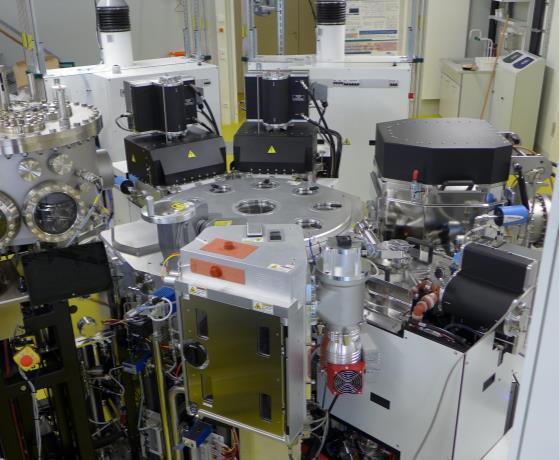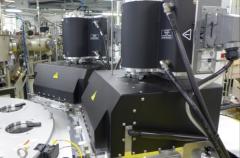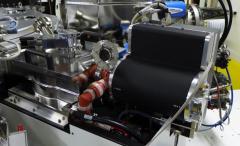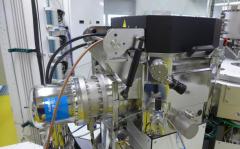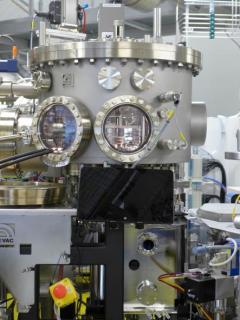Institute Silicon Photovoltaics
Kobus Deposition cluster
Silicon deposition cluster
Depositions of silicon-related materials in EMIL are carried out in a cluster tool manufactured by the company Kobus, France. In a cluster tool different process chambers are arranged around a central handling chamber, which is equipped with a robot that loads and unloads samples from each individual chamber. Up to ten samples, either wafers up to diameters of 150 mm or square shaped substrates up to 10x10 cm2, can be introduced into the loadlock. This loadlock opens into a flow box ensuring a clean path for substrates from the neighboring clean room area into the setup.
Tool configuration
The cluster tool comprises four different depositions chambers, two PECVD chambers, one ALD chamber and one PVD chamber. The chambers can be operated in parallel and the whole system is designed to carry out automated process sequences, defined individually for each substrate. This can be used to prepare multiple, identical samples or to carry out experimental series in which deposition parameters like doping or film thickness are varied systematically with minimum user operation required.
An additional chamber of the cluster system is connected to the UHV backbone of the SISSY lab via a sample separation chamber. Wafers or carriers can be lifted into this separation chamber, where a transfer of individual samples to sample carriers of the UHV backbone can be carried out manually under UHV conditions.

